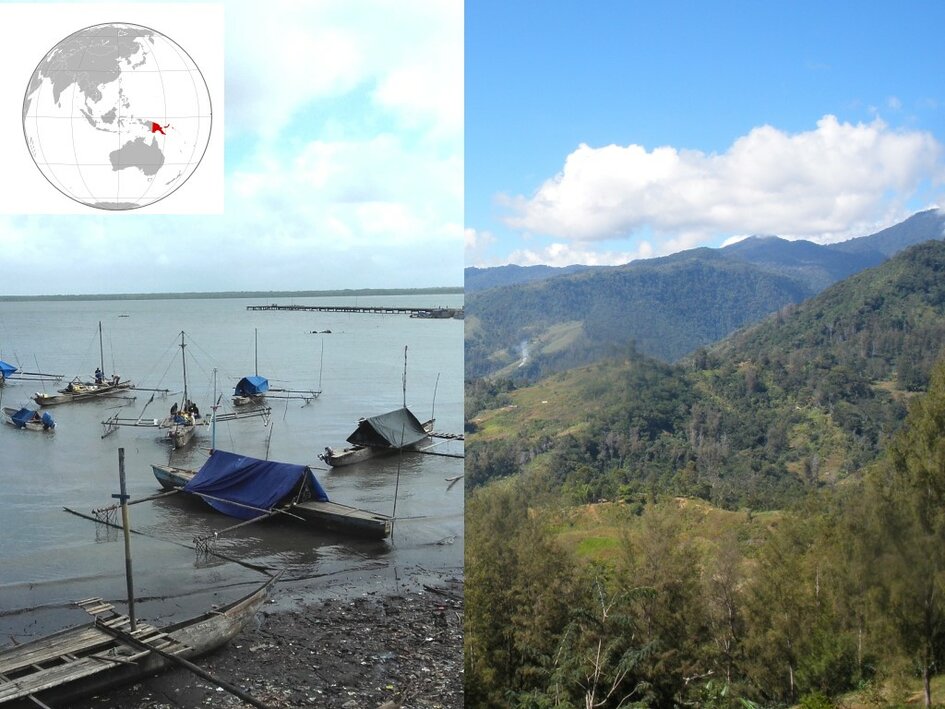Genetic adaptations have impacted the blood compositions of two populations from Papua New Guinea

Papua New Guinea (PNG) has a wide range of environments, each presenting unique challenges to human survival. Highlanders and lowlanders of PNG are striking examples of populations facing distinct environmental stress. Whereas the highlanders encounter low oxygen availability due to altitude, the lowlanders are exposed to specific pathogens that are absent in the highlands, such as malaria. Despite these strong environmental pressures, the specific adaptations of these populations have remained overlooked. A new study published in Nature Communications on Tuesday, 30 April 2024 sheds light on the genetic adaptations of Papua New Guineans in response to their unique environmental pressures.
The new findings presented rely on new whole-genome sequences from highlanders and lowlanders from Papua New Guinea. The data was collected by the Papuan Past project, which brings together researchers from the universities of Tartu (Estonia), Toulouse (France), and Papua New Guinea. “We explored the signatures of selection in newly sequenced whole genomes of 54 PNG highlanders from Mt Wilhelm (Chimbu Province) and 74 PNG lowlanders from Daru Island (Western Province). We hypothesised that the genomes of both populations have been shaped differently to mitigate the detrimental effects of their respective environments,” explains Dr François-Xavier Ricaut, CNRS researcher at the Centre de Recherche sur la Biodiversité et l'Environnement (University of Toulouse, France), the project leader and corresponding author.

“The genetic variants under selection identified in our study show associations with blood-related phenotypes,” says Dr Mathilde André, the lead author from the Institute of Genomics (University of Tartu, Estonia). One of these genetic variants under selection in Papua New Guinean highlanders might impact the red blood cell count. A higher red blood count helps the highlander adapt to the lower oxygen availability in the highlands. On the contrary, the selected variant in the lowlanders is associated with the percentage of white blood cells. “This supports the idea that hypoxia might have been the main driving force of selection that has acted on Papua New Guinean highlanders. However, specific pathogens might have shaped the genome of lowlanders through selection,” adds Dr André.
Dr Nicolas Brucato, a co-author from the University of Toulouse, continues, “Interestingly, both the variants also affect the heart rate of individuals with those mutations. This multiplicity highlights the complexity of interpreting the role of genetic mutations. One mutation can affect multiple phenotypes altogether.”
Dr Mayukh Mondal from the Institute of Genomics, who co-led the project, adds, “Interestingly, one of the top candidates for selection in lowlanders has a non-human origin.” Denisova is one of the archaic hominin populations living in Asia before modern humans settled in Papua New Guinea around 50 thousand years ago. Although Denisova quickly went extinct around that time, they have interbred with Papua New Guinean ancestors and left their legacy in the genome of modern Papua New Guineans. This study suggests that a genetic mutation in Denisova that impacts a specific protein structure has been directly passed to Papua New Guinean genomes. “It looks like the altered protein is beneficial for the lowlanders to survive in their environment. Although we do not know the exact cause of this selection, this mutation might help the lowlanders overcome malaria,” concludes Dr Mondal.
This new insight into how local adaptation has shaped the genomes and phenotypes of Papua New Guinean highlanders and lowlanders differently points out the necessity of investigating populations with diverse backgrounds to shed light on the key aspects of human biology.






